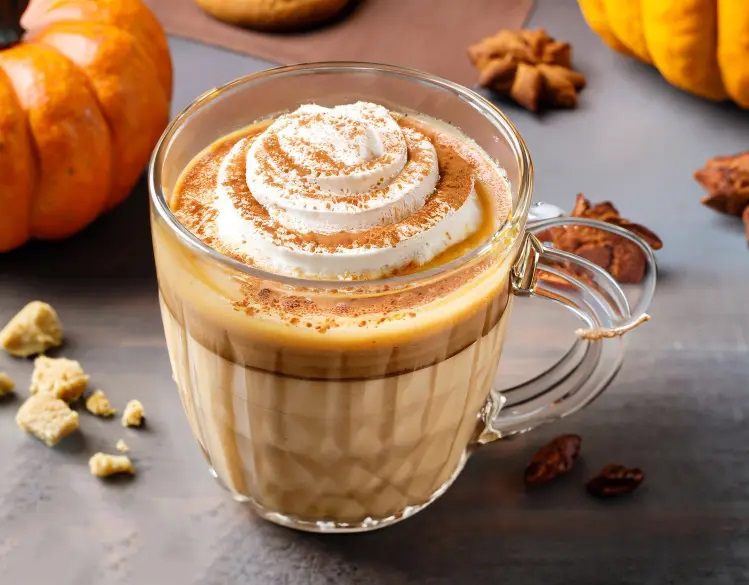The PSL rebellion
Every fall, grocery stores line their shelves with pumpkin spice-flavored products that range from traditional pumpkin pies to the more questionable pumpkin spice everything. The flavor haunts us in part because it is the fruit of slavery and indigenous exploitation. The flavor is a mixture of nutmeg, cinnamon, ginger and cloves—all spices that humans have enjoyed in their food for a long time. In fact, researchers have discovered that humans have been using nutmeg as food for 2,000 years longer than previously thought. Nutmeg and other spices became extremely valuable commodities that people all over the world used in food and medicine. Asia sold spices to the Middle East they trickled into spice-starved Europe. By the 1300s, and maybe earlier, traders traveled to the Banda Islands—which were among the so-called “Spice Islands”—because they were the only place nutmeg was known to grow. “At one point in the 1300s, when tariffs were at their highest, a pound of nutmeg in Europe cost seven fattened oxen and was a more valuable commodity than gold.” A desire for spice is part of what drove European seafaring and contact with the Americas. In fact, the Dutch were so hungry for nutmeg that in late 1600s that they traded their colony of New Amsterdam (NYC) to Britain in exchange for Pulau Run, a nutmeg-producing Banda Island.
“It’s true that if we didn’t consume food that hadn’t been touched by slavery and indigenous displacement, we wouldn’t be eating a lot of food.” “But whenever foods enter the pop culture lexicon the way pumpkin spice has in the US, it’s important to acknowledge how it reached us.” Along with nutmeg, pumpkin spice typically consists of cinnamon, cloves and ginger — all of which were touched by violence. The average European did not have access to many spices in the 17th century, Johnson said, but once they enslaved laborers were brought to work on plantations, the crops were mass-produced and the supply increased, causing prices to fall. “It’s the same with these Starbucks lattes,” he said. “You’re getting stuff from all over the world and repackaging it for wealthy consumers without acknowledging the sorid history of the ingredients.”
The backlash is also about our anxieties around capitalism. The fact that the pumpkin spice latte — which, to many, conjures the scents and imagery of Thanksgiving, is released earlier every year. This food trend forces us to think about how the “free” market is essentially designed to create this kind of phenomenon. If a product like the pumpkin spice latte sells, it’s natural under capitalism for other companies to attempt to replicate that success. But PSL’s show that the capitalists are controlling and driving the customers. Essentially, hating pumpkin spice lattes is our way of rebelling and “othering” those who drink them. In the process, marking ourselves as rebels and “special” consumers.
“Nutmeg is a versatile spice that adds a warm, nutty flavor to both sweet and savory dishes.” “Consuming large amounts of nutmeg can lead to hallucinations, nausea and other health issues. It should be used sparingly,” the nutritionist said. Symptoms of nutmeg toxicity include nausea, vomiting, mouth dryness as well as — in severe cases — seizure, hallucination. Many socialites are asking what their PSL consumption says about them and those who cannot overcome the commercial onslaught. Considering that nearly a half-billion dollars in pumpkin-flavored products were sold in the United States over the past year it’s clear that the ancient people in Indonesia were onto something.
Let’s give ’em pumpkin to talk about.
I saw this guy today at Starbucks, no iPhone, no tablet, no laptop.
He just sat there drinking coffee.
Like a psychopath.
The Starbucks in my town just hired a Jewish barista…
He brews.
How do you cure someone with a pumpkin spice addiction?
Apply the pumpkin patch.
I took my girl to Starbucks,
Cause I forgot her name.
October 11th Birthdays
1884 – Eleanor Roosevelt, 1963 – Joan Cusack, 1976 – Emily Deschanel, 1968 – Jane Krakowski
1961 – Steve Young, 1939 – Ralph Lauren, 1964 – Jim Rome, 1966 – Luke Perry



